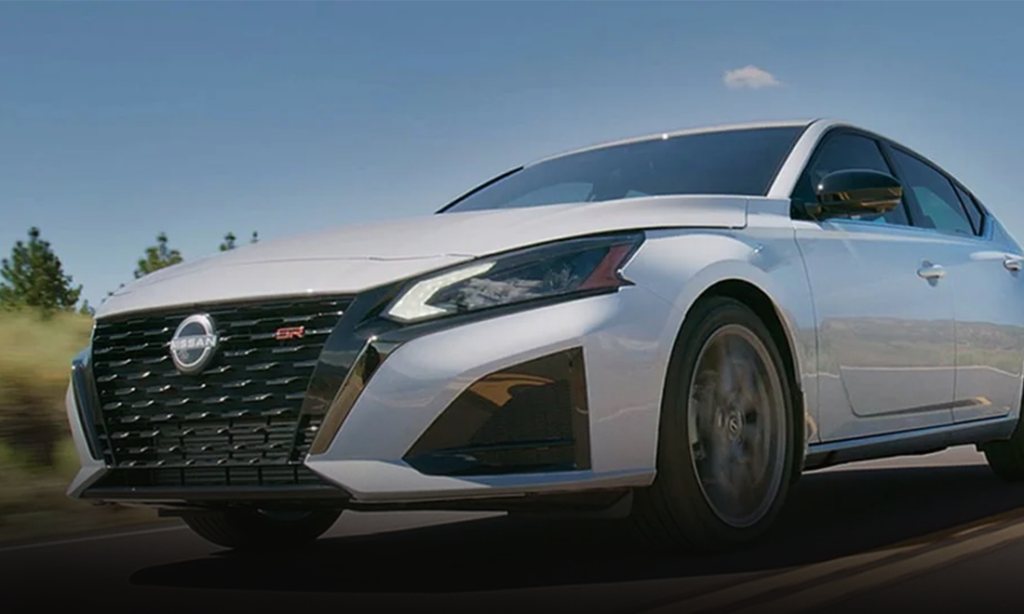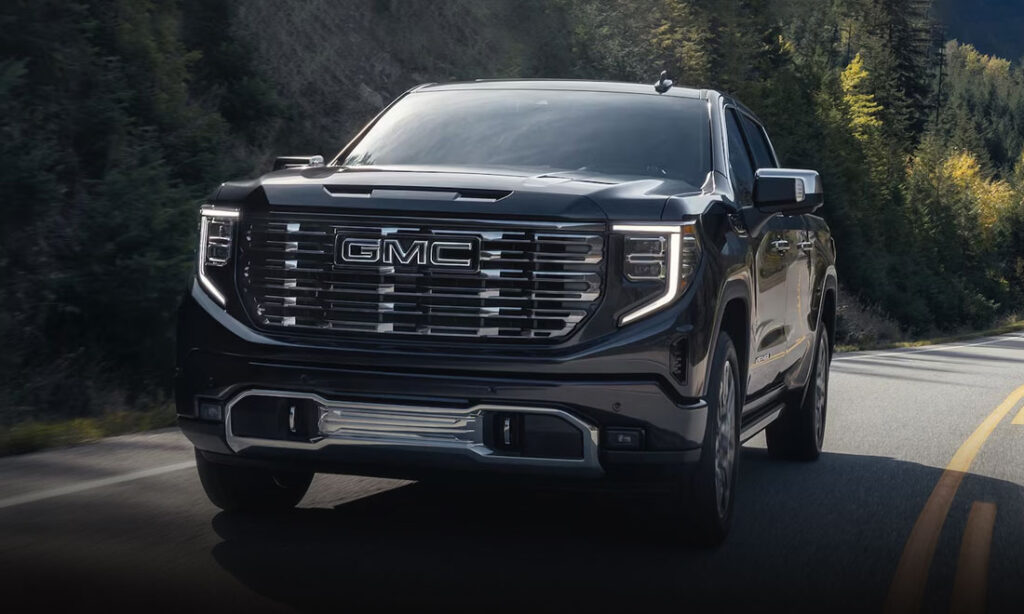Kia Optima Generations: Through the Years
A look back at all five Kia Optima generations from 2001 to today, a period of significant transformation for this sedan including a new name as of 2021.
Kia Optima Through the Years
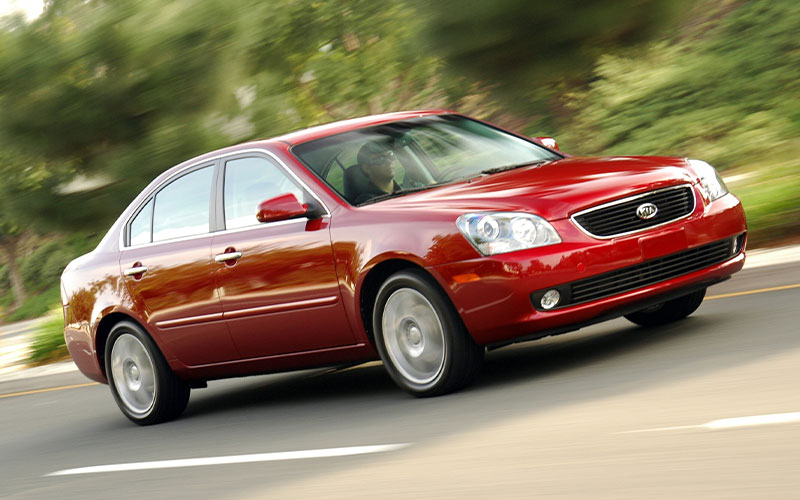
2007 Kia K5 – kiamedia.com | Shop Kia Optima on Carsforsale.com
The midsize sedan segment has had its share of ups and downs, winners and losers, and challenges – particularly right now as it is being slowly swallowed up by the crossover and SUV segment. One vehicle in this arena that has followed that trajectory over the past 20-odd years is the Kia Optima. So far, five Kia Optima generations have offered a sort of story arc for the brand itself.
When the Optima landed on these shores in 2001, it was a nondescript basic sedan. But the intervening five Kia Optima generations have taken this Toyota Camry competitor from non-descript to knockout in its current K5 form. Like Kia, the Optima built its reputation on an unbeatable warranty followed by eye-catching design, and – from day one – a regular parade of value.
All Kia Optima generations have shared a stable with the Hyundai Sonata and early on, it was badge engineering at its finest – and by finest, we mean most pathetic. However, these days you’d be hard-pressed to identify the similarities as both Kia and Hyundai have built separate powerhouse brands. This article will focus on how the various Kia Optima generations evolved from 2001 to the present-day K5 iteration.
First Generation Kia Optima: 2001-2005
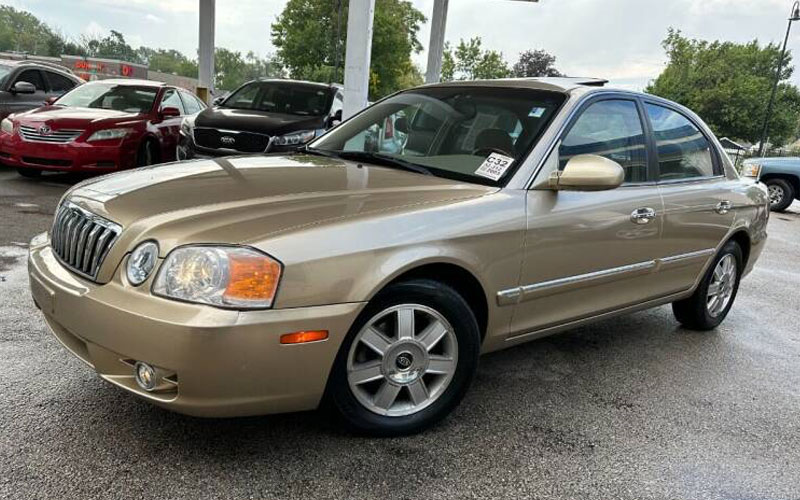
Of all the Kia Optima generations, the first is the most forgettable. Though these early Optimas kicked off what would go on to be a highly successful Kia-Hyundai integration plan, the rebadging effort was lukewarm at best. These gen-one Optimas did have a relatively long list of standard equipment like air conditioning, side airbags, power accessories, and a fully independent suspension.
At a base price of less than $16,000, the Optima undercut the segment leader Toyota Camry by nearly $4,000. However, safety ratings per the IIHS were rated as poor for side crash testing and just acceptable for the frontal protocol. Four- and six-cylinder powertrain options included a manual transmission on the four-pot, but that’s about as interesting as these 20-year-old Kia Optimas get.
Second Generation Kia Optima: 2006-2010
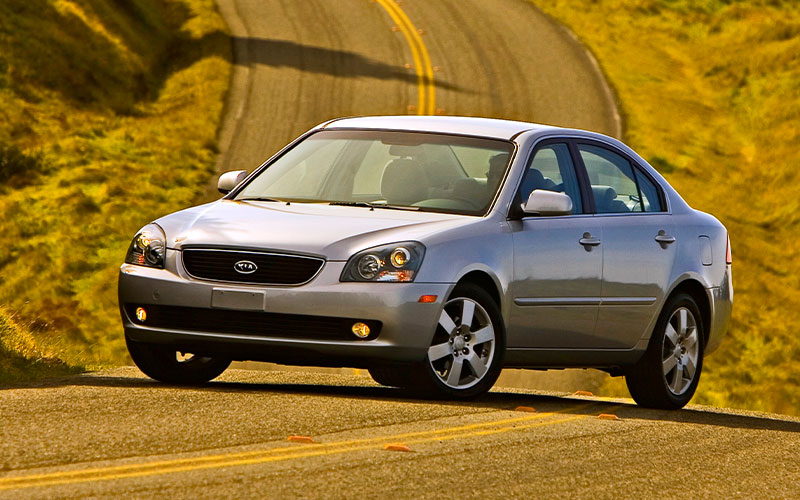
For its second generation, the Kia Optima was less obviously a Hyundai Sonata thanks to improved styling. It also picked up lauded handling thanks to the addition of a former Mazda chassis engineer on the development team. Power was up to 161 horsepower on the inline-4 engine and 185 hp on the V6. Safety was also upgraded with the IIHS rating the 2006 Optima acceptable in side crash testing and good (the highest score) in frontal testing.
A 2009 refresh added nearly 3 inches of overall length, a new front face, more potent powertrains, standard anti-lock brakes, and stability control. Along with the famed 100,000-mile powertrain warranty, the second-gen Kia Optima helped turn this midsize sedan into a legitimate competitor.
Third Generation Kia Optima: 2011-2015
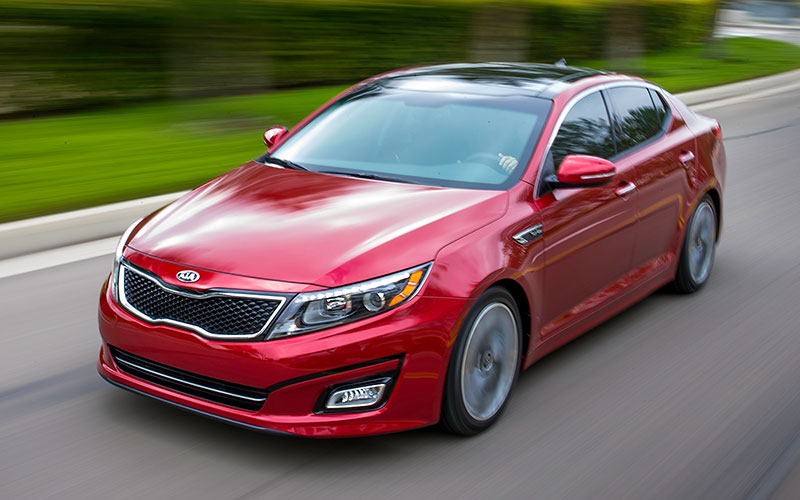
Of all the Kia Optima generations, the third one arguably took its competitive status to the next level. With Audi TT designer Peter Schreyer on board, the 2011 Kia Optima put the industry on notice with its looks alone. These models ushered in the “Tiger Nose” front end that created a new identity for the automaker’s entire lineup, including the Kia Sportage, a crossover whose history we cover here.
This all-new Kia Optima generation was tuned for a sportier feel versus its Sonata platform-mate. The base 2.4L inline-4 motor was rated for 200 hp, paired with a 6-speed manual, and earned 34 mpg on the highway. An optional 2.0L turbocharged four-cylinder setup came in at 274 horses and a hybrid variant joined the lineup for the first time.
Safety continued its upward march with the 2011 Kia Optima taking home Top Safety Pick honors from the IIHS. Over the 5 years of this generation, the Optima gained features like climatized front seats, heated rear seats, dual-zone automatic climate control, and a panoramic moonroof. All of which served to push the third-gen Optima to a peak sales figure of more than 159,000 units in 2015.
Fourth Generation Kia Optima: 2016-2020
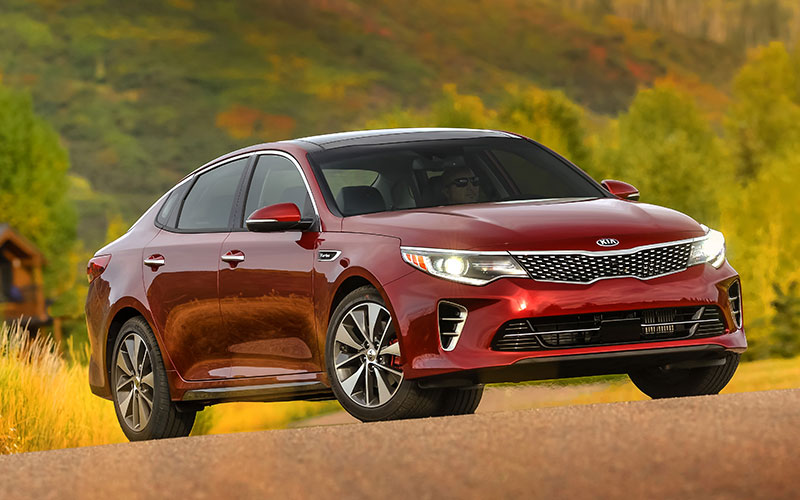
In 2016, the fourth-generation Kia Optima debuted with a host of modern safety tech offerings like automated emergency braking, a surround-view monitor, automatic high beams, and adaptive cruise control. On top of which, this latest Optima earned a Top Safety Pick+ award from the IIHS, that agency’s highest safety rating.
Slightly longer, wider, and taller than the prior generation, these Optimas were constructed with a healthy dose of high-strength steel in the chassis, which Kia said improved structural rigidity. The 2.4L four-pot from third-gen models carried over, but a new 1.6L turbocharged inline-4 joined the Optima lineup with 178 horsepower. Standard content included 16-inch alloy wheels, Bluetooth connectivity, and a 6-speaker stereo.
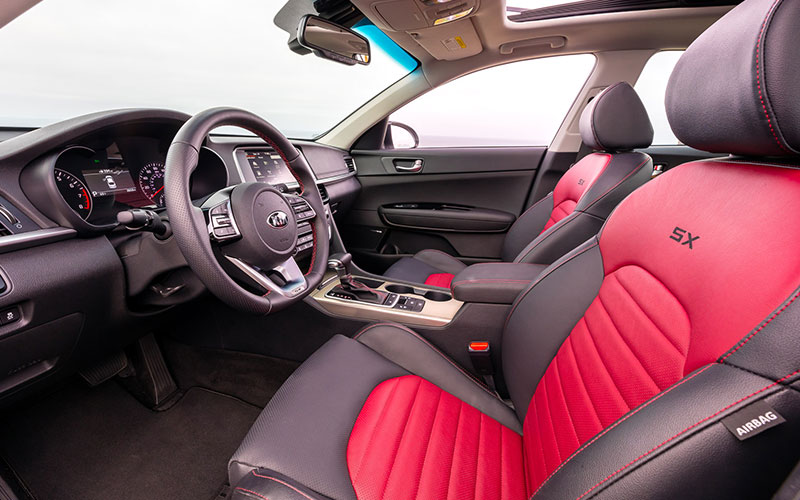
Along with optional premiums like ambient cabin lighting and a Harman Kardon 10-speaker audio system, a new plug-in hybrid model joined the fourth-gen Optima lineup in 2017 with nearly 30 miles of electric driving range. By 2018, Kia made Apple CarPlay and Android Auto lineup standard along with touchscreen-based control.
A 2019 overhaul brought new headlights, fresh wheel designs, and available two-tone leather upholstery on range-topping models. Kia also made forward collision mitigation, a lane-keeping system, and a driver attention monitor standard across the board in 2019, followed by the addition of a pedestrian detection feature the following year. You can read an in-depth review of that 2020 Kia Optima here.
Fifth Generation Kia K5: 2021-Present
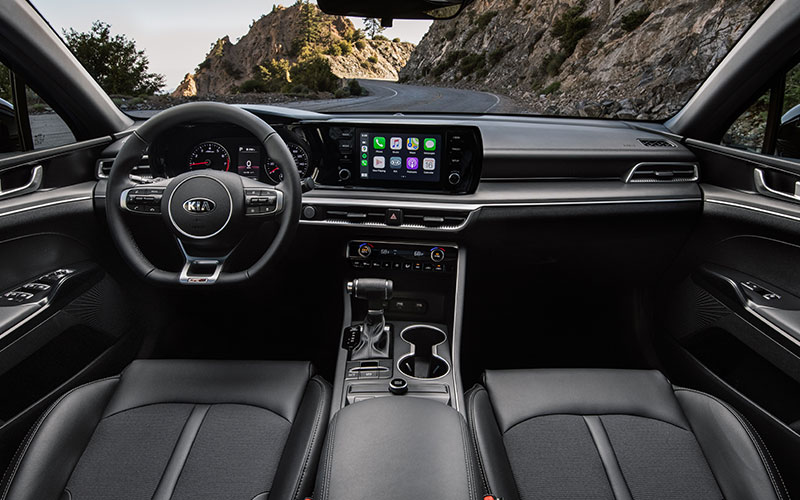
Though still based on the Hyundai Sonata and occupying the same slot in Kia’s lineup, the fifth-generation Optima was renamed K5 for 2021. It was the most aggressively styled of the Kia Optima generations with distinctive Z-shaped LED daytime running lights.
Other notable changes included optional AWD for the first time and an available 2.5L turbocharged four-cylinder motor making a healthy 290 horsepower. The 1.6L turbo powertrain from the prior generation carried over, but was now standard equipment.
On the technology front, an 8-inch infotainment touchscreen with wireless smartphone mirroring was standard as were LED headlights. Optional systems pushed the K5 into class-leading territory like a fully digital gauge cluster, a 10-inch central display, a 12-speaker Bose audio system, wireless phone charging, and app-based vehicle control.

2023 Kia K5 – kiamedia.com | Shop Kia Optima on Carsforsale.com
The K5 remains an impressive midsize sedan, as you can read about in our comparison of a new and used model here. But it’s fighting an uphill battle as evidenced by Kia discontinuing the K5 in Europe and most right-hand drive markets due to declining consumer interest.
Though this is a problem with the sedan segment overall, the 2023 Kia K5 recorded fewer than 65,000 sales. That pales in comparison to the automaker’s popular Sportage crossover that sold more than twice that figure in 2023. Will the K5 be the last of the Kia Optima generations? Hard to say, but considering how it continues to deliver the brand’s uniquely high level of value, we certainly hope not.



